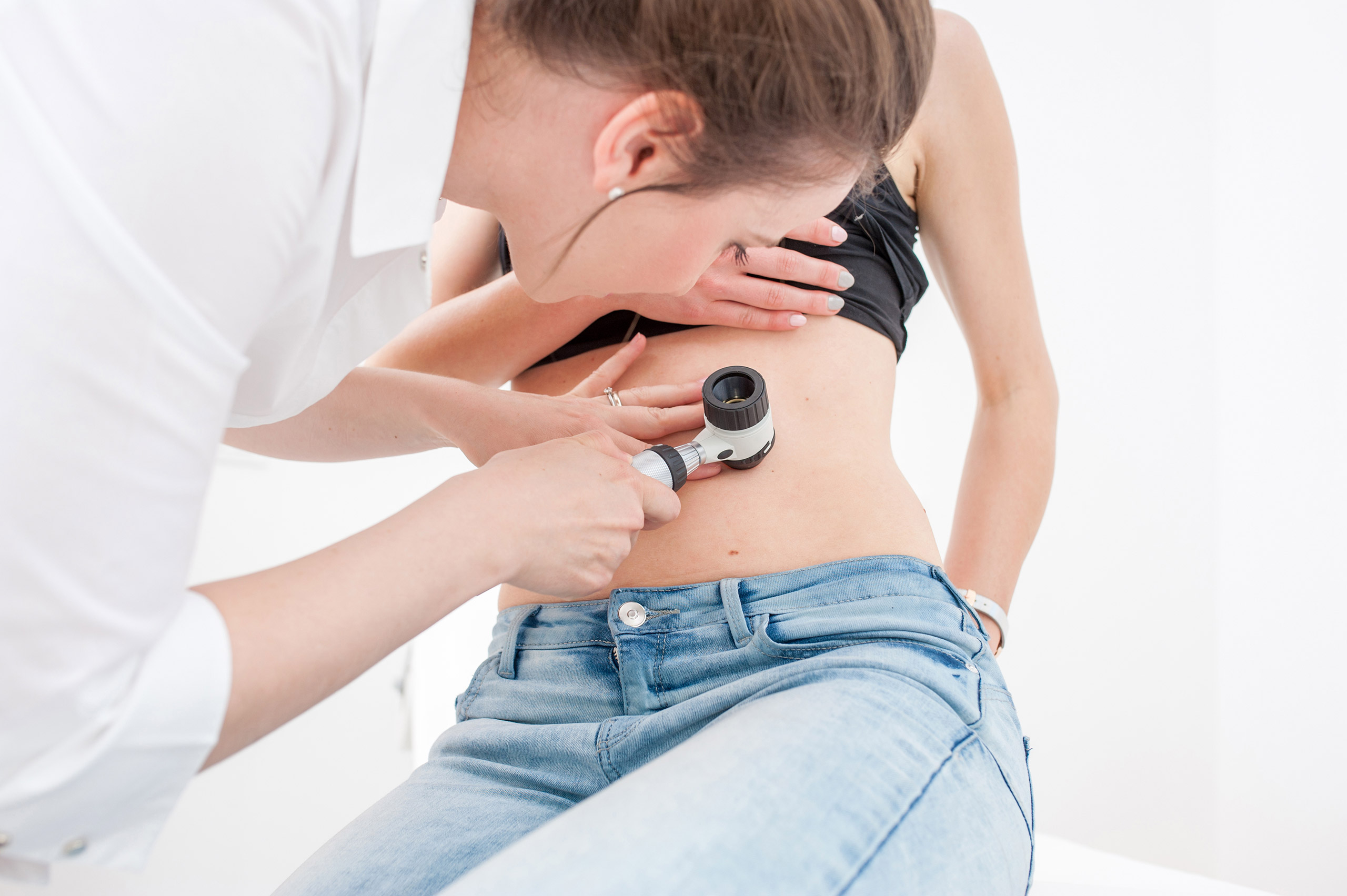Whatever the season, whether or not you've been in the sun recently, dermatological control of moles is required once a year. It's good to keep an eye on the condition of your moles even if you have no cause for concern, but even more so if you've noticed any change in the shape of a mole, a new one has appeared or you have a painful one. A simple dermatological check-up can reassure you, because moles have a particularly dangerous malignant potential.
Why do we get new moles on our skin?
The causes can be multiple, but the most common are:
- advancing age
- fair skin, people with red hair
- family history of atypical moles
- side effects of various medicines
- genetic mutations
- sun exposure, sunburn, excessive tanning
The causes of moles in adulthood are not fully understood. New moles may or may not be malignant. Sunburn in childhood and adolescence can have lifelong negative consequences, as it can promote skin cancers, including the dreaded melanoma.
What moles should we worry about?
What are the characteristics of problem moles and when should we go to the dermatologist's office urgently? Whenever:
- the moles are asymmetrical;
- have irregular edges;
- exceed 5 mm in diameter;
- The above changes have occurred over time;
- we see ulceration and redness of the moles.
Suspicious moles do not usually appear on areas of the body out of the sun. The most common areas where melanoma occurs are, for example, in women, the legs and arms.
Patients with very many moles (more than 100) and risk factors should be assessed annually by their specialist.
For the most objective and efficient examination, it is necessary to record them digitally dermatoscopically, in order to have data on the changes of all the signs on the skin. The dermatologist determines, after consultation, the need for surgical excision and treatment of a mole.
Rules for maintaining skin health
Whether they are from birth or acquired throughout life, moles must be protected from harmful factors.
Avoid exposure to the sun in summer, especially between 10.00 and 18.00.
Sunburns especially in childhood, but also in adulthood, or repeated trauma to the nevus become risk factors. Exposure to the sun is at all times, in all seasons, not just when we go to the beach.
Most commonly, skin cancer occurs in healthy skin without the obligatory presence of moles.
Therefore, ideally you should use creams with maximum protection factor in all seasons, regardless of the weather outside. Another condition for taking care of skin health remains dermatological control of moles. Regular skin scans can save your life!
Dermoscopic assessment of skin quality
The dermatologist's most important tool is dermatoscope, a reflected light microscope, which allows the experienced doctor to accurately assess skin changes, especially birthmarks/blemishes, but also skin cancer and non-melanoma warts, for example. Examination of the nevus, individual structures such as vascular patterns and pigment distribution, can provide information about the benign or malignant nature of the mole.
In addition to Photofinder, State-of-the-art dermatoscope used in the clinic, we provide digital documentation of your dermatoscopic nevus findings as part of our skin cancer screening. This means that overview photos are taken and all pigmented marks are documented for you to keep track of. These recordings allow us to detect changes in the nevus over time or even notice the recurrence of birthmarks. This procedure has proven to be very effective in the context of regular examinations of the whole body.
That's why we invite you to make an appointment for digital dermatoscopy with skin cancer screening at least once a year!
Remember that prevention is the best "weapon" to protect your health, and early detection of skin cancers can stop the disease and save your life!


